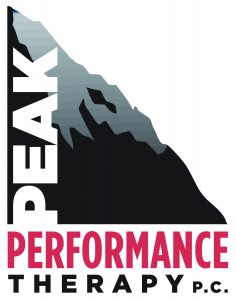
30 Jan Meniscus Surgery: Is Physical Therapy A Viable Alternative?
On Wednesday, December 25, The New York Times published what became a controversial article by Pam Belluck about knee surgery. The headline: “Common Knee Surgery Does Very Little for Some, Study Suggests.”
The article went on to say:
“A popular surgical procedure worked no better than fake operations in helping people with one type of common knee problem, suggesting that thousands of people may be undergoing unnecessary surgery, a new study in The New England Journal of Medicine reports.
The unusual study involved people with a torn meniscus, crescent-shaped cartilage that helps cushion and stabilize knees. Arthroscopic surgery on the meniscus is the most common orthopedic procedure in the United States, performed, the study said, about 700,000 times a year at an estimated cost of $4 billion.
The study, conducted in Finland, involved a small subset of meniscal tears. But experts, including some orthopedic surgeons, said the study added to other recent research suggesting that meniscal surgery should be aimed at a narrower group of patients; that for many, options like physical therapy may be as good.
The surgery, arthroscopic partial meniscectomy, involves small incisions. They are to accommodate the arthroscope, which allows doctors to see inside, and for tools to trim torn meniscus and to smooth ragged edges of what remains.”
Continue reading here.
A torn meniscus is as common in Telluride as dogs and controversy, so I asked physical therapist Jennifer Tooley of Peaks Performance Therapy to address the issue at the heart of the story: Is physical therapy always a viable alternative??
Jennifer Tooley’s response:
After studying the contents, Jenn determined to focus on one particular paragraph, which hedges the core question.
“The Finnish study does not indicate that surgery never helps; there is consensus that it should be performed in some circumstances, especially for younger patients and for tears from acute sports injuries. But about 80% of tears develop from wear and aging, and some researchers believe surgery in those cases should be significantly limited,” wrote Belluck.
“Thinking about getting surgery for your meniscus tear?,” Jenn asks. “You may want to think again. Recent studies have shown that there is no difference in outcomes between patients that choose surgical intervention and those that choose to have physical therapy alone.”
Jenn goes on to say the following should be considered before deciding whether or not to have meniscus surgery: type of tear, age, and activity level.
“Young patients and athletes should consider meniscus repair surgery if possible because the menisci play an important role in shock absorption and force transmission between the thigh bone and the shin bone. Without the menisci, more load will be transmitted to the articular cartilage leading to premature degenerative changes.
“Patients with degenerative meniscal tears are almost never amenable to repair due to the lack of intrinsic strength of the menisci. If surgery is elected to remove the torn portion of meniscus and there is underlying arthritis, it is difficult to determine whether the pain will subside since the arthritis will still be present.
“Not only has physical therapy been shown to have similar outcomes as compared to arthroscopic surgery in patients with degenerative tears, but it is also cost effective. Meniscus surgery can cost anywhere from $5,000 to $8,000 whereas nine physical therapy visits will cost in the ballpark of $1300.
Physical therapy can help to decrease swelling, improve the dynamic stability of the knee, normalize gait pattern, and normalize pain free ROM. A majority of patients with degenerative meniscus tears can return to activities of daily living and recreational activities pain free after a course of physical therapy alone.
The benefits and risks of surgical intervention should be carefully weighed with your healthcare provider before making the important decision to undergo arthroscopic surgery for a torn meniscus.”
About Peaks Performance Therapy:
In business since 1996, Peak Performance Therapy is committed to providing the best in orthopedic and manual physical therapy in the Telluride region. Each visit is one-on-one with a therapist for 45 minutes. This ensures adequate time for hands-on treatment and the appropriate complimentary exercises.
“We strive to get our patients back to their peak level of performance. We want them to be optimal in whatever activity they do; whether it be sports, work, or life with their families,” said Mark Campbell, MSPT, OCS, CMPT, owner.
And Mark isn’t just whistling Dixie.
I first worked with Mark Campbell in the 1990s after a fall from a horse caused a radical break in the radial bone of my right arm. It is thanks to my surgeon, part-time Telluride local Hill Hastings, renowned in the field, and to Mark, that I have full use of that appendage (including backbends and handstands).
Recently a severe tendonitis triggered a return trip to that well, where I have been working with Jennifer Tooley, PT, DPT, F.I.S.T.
About Jennifer Tooley:
A relative newcomer to Telluride and Peak Performance Therapy, Jenn has seven years of experience in sports medicine physical therapy. She obtained her bachelor of science degree in Exercise Physiology in 2003 from Colby-Sawyer College and went on to earn a doctorate in physical therapy from Husson University in Maine. Her areas of expertise include the bio-mechanical analysis of runners and cyclists, sports rehabilitation, manual therapy, and post-operative rehabilitation. Jenn has taken numerous trips abroad teaching physical therapy in the local hospitals and was invited to speak at the International Arthroscopy Conference last year in Lima, Peru.




Steve
Posted at 22:00h, 29 MarchWow! What a great Article! When I tore my meniscus, physical therapy was most definitely a viable solution. I would recommend others give PT a shot if their doctor sees it as a viable alternative to surgery.